First Stage of Drawing: The Scribbling Stage
Approximate Ages: 1 through 4 years old
Why do children scribble?
Scribbling is the first step in writing and an essential developmental milestone.
Just like your child’s first sounds lead to talking, your child’s first scribbles lead to writing. It is your child’s way to explore written communication even if it doesn’t make sense to you.
There are 3 stages to scribbling, random, controlled and naming. Children develop through these stages at different rates just like how they grow physically at different times. Try not to compare your child’s scribbling to that of their peers or siblings.
It is perfectly normal for creative and mental growth to vary among children.
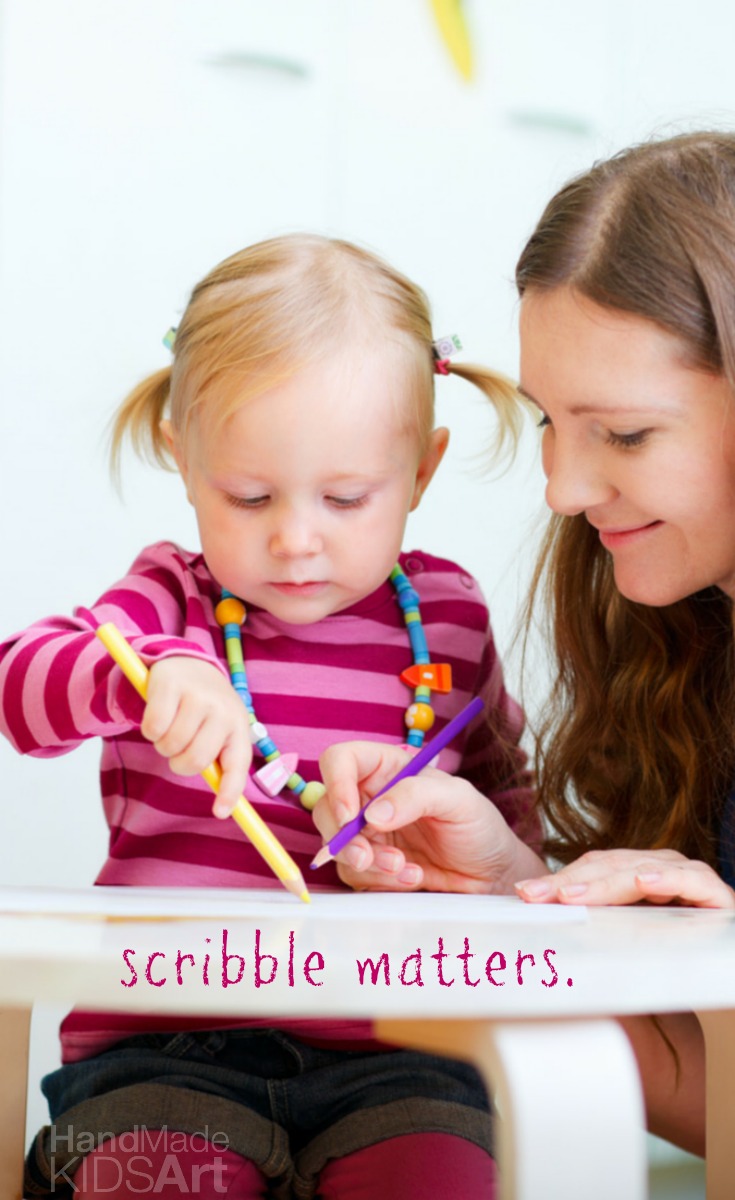
Three Stages of Scribbling
1. Random Scribbling
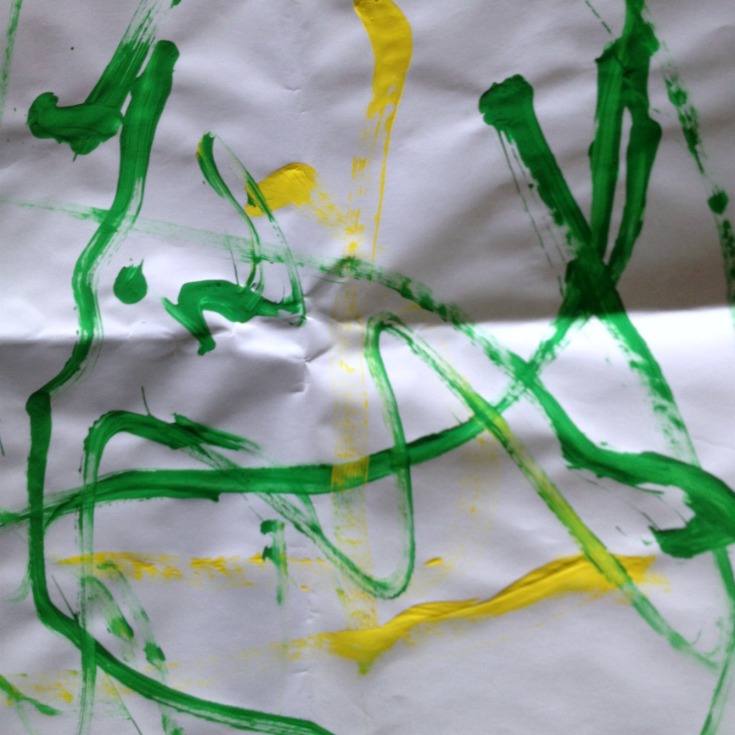
Your child is learning how to make marks on paper. They are exploring the process of creating marks through play.
Your child will experiment with what it feels like to hold the marker or crayon. They may try moving the crayon really fast as they are using kinesthetic movement to feel the marks they are creating. Circular marks often happen first as this movement feels natural.
It is important to remember the marks are random and it is the process not the end product that is important.
2 . Controlled Scribbling
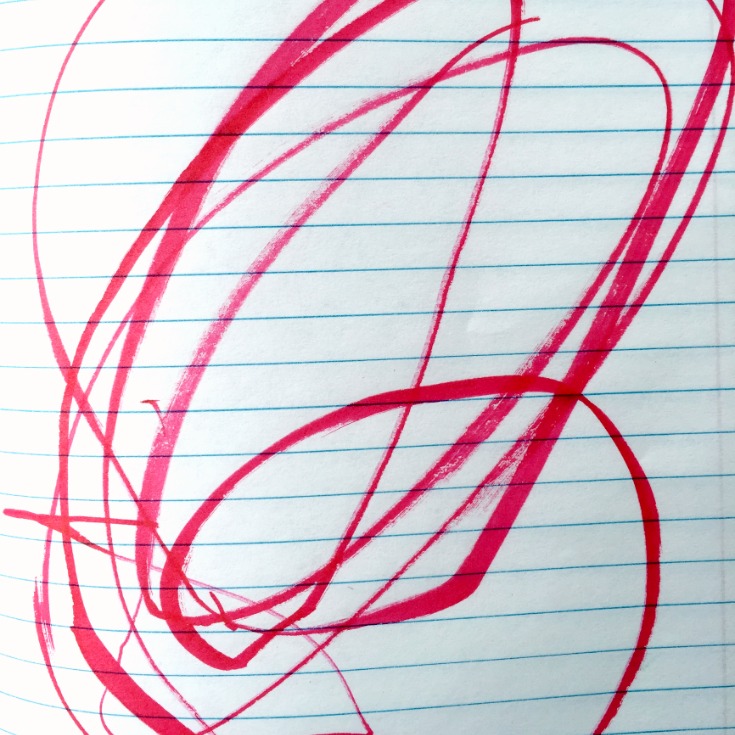
Random scribbles will eventually move to a more controlled movement. You may begin to see more recognizable shapes as your child begins to gain muscle control and hand eye coordination. Children will most likely repeat shapes and lines and begin to have a sense of ownership with their drawings.
3. Naming of Scribbling
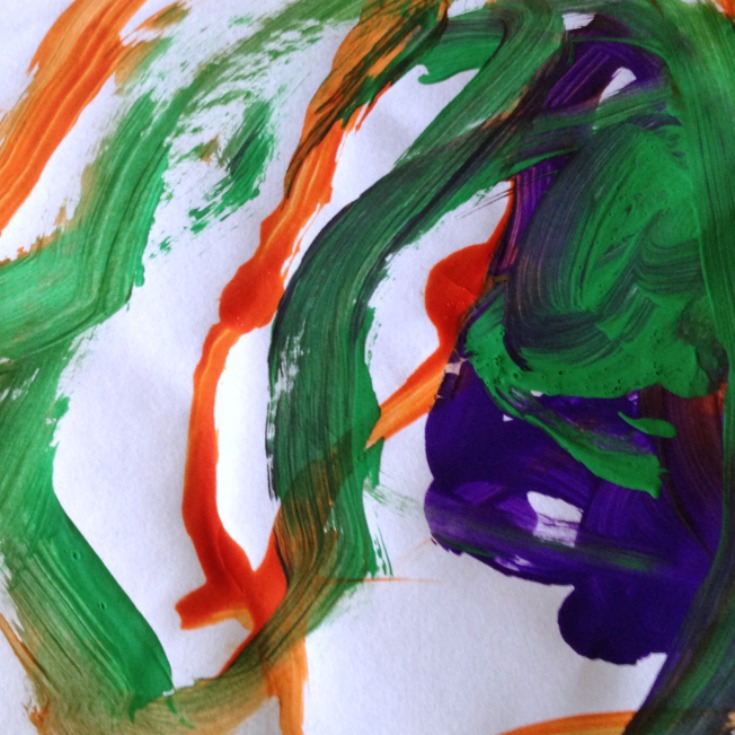
Controlled scribbling will lead to the naming of scribbles. This is when your child will have a lot to say about their artwork. Use open ended questions to prompt their creative thinking skills rather than try to guess what they are drawing.
Benefits of Scribbling
1. Essential pre-writing skill
2. Develops hand eye coordination
3. Strengthens fine motor skills
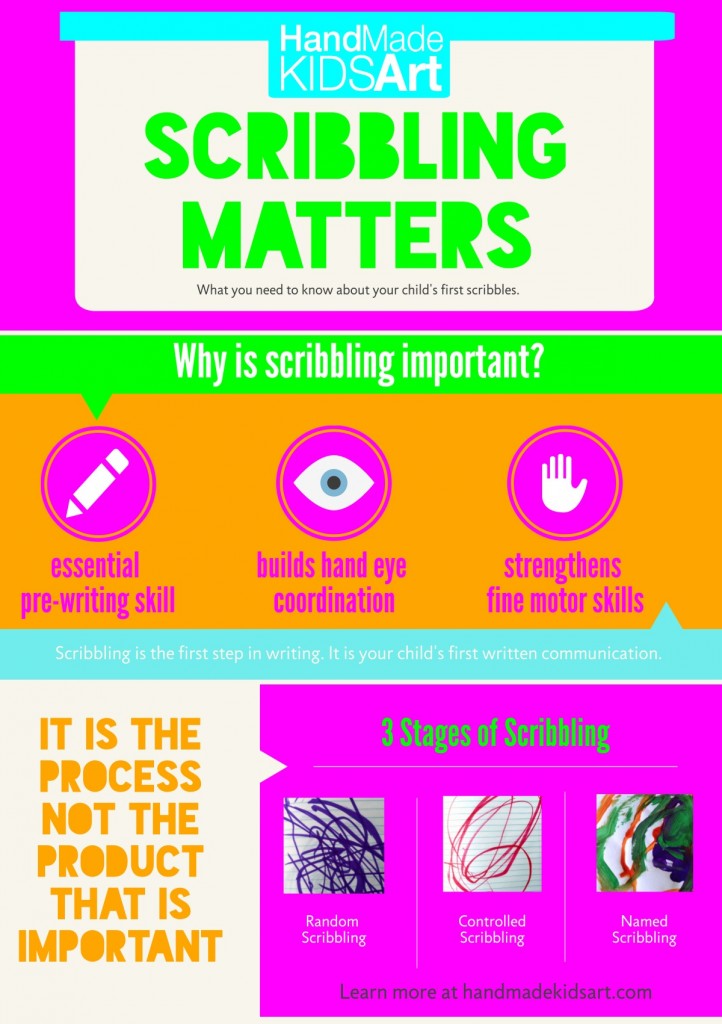
Provide your child opportunities to make marks and scribble.
It doesn’t take expensive art supplies or a lot of time to set out an invitation for your young artist to create. Simply arrange a piece of paper and drawing material on the table and let your child create.
- crayons
- markers
- white paper
- construction paper
- colored pencils
- chalk
- oil pastels
- paint
For more creative start ideas check out:
My Child’s Artwork is a Pinterest Fail
Want to know more about creating art with Preschoolers?
Sign up here to receive more information about preschool art and how to grow a creative thinker! Sign up today and as a thank you receive our free download, “5 Ways to Unlock Your Child’s Talents”.
Follow us on Facebook, Instagram, Twitter or Google +!
Visit Jamie | Hand Made Kids Art’s profile on Pinterest.
Early educators also now believe scribbling is a pre literacy skill. There is a link between scribbles & the written word on the page. I am an early interventionist who encourages scribbling just as much for literacy as the other skills you mentioned.
Oh, I would agree that scribbling is a pre-literacy skill too! Thank you for sharing your expertise! 🙂